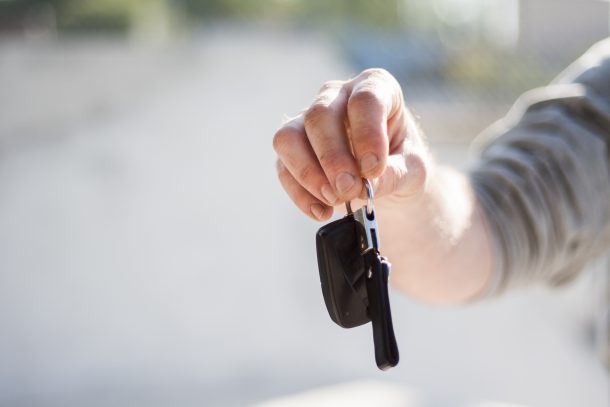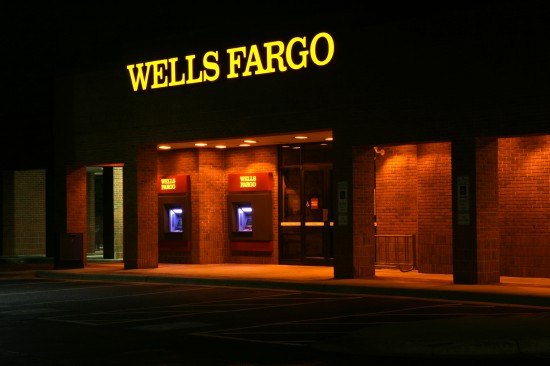#SubprimeLoans
Subprime Auto Market Looking Extra Rough in 2021
The subprime auto market looks to be in poor health as the number of borrowers with outstanding loans that are more than 60 days overdue continues increasing. While the number has a tendency to rise and fall between seasons, the general trend toward indebtedness has been going up since 2015, with increasingly more customers boasting lackluster credit scores becoming incapable of footing their transportation bill.
Delinquencies skyrocketed in 2020, as government lockdowns pushed many out of work and now appear to be increasing due to a recovery plan that primarily seems to be serving cooperate interests and the wealthiest socioeconomic classes. Though it should be said that middle and lower-class families had been losing ground for decades, at least according to the latest Pew Research data. Pandemic-related complications only served to accelerate the existing financial disparities on all fronts. We are now on course for poorer people to have even less money moving forward, especially in the world’s most developed countries.
I wonder why so many people are defaulting on their car loans…
Report: Subprime Buyers Not Paying Auto Loans
As the resulting complications of coronavirus lockdowns obliterate the economy, reports have emerged that subprime car buyers are beginning to skip payments. Delinquencies were expected to come up a bit this year, even before local governments started issuing lockdown orders, but the swift economic impact of these health initiatives have proven wider-reaching than anyone anticipated.
Normally, the status of the more volatile subprime market is a useful tool in assessing the financial well-being of the country as a whole — sort of an early warning device for economists. However, getting an accurate read on who stopped paying could be hard during the pandemic. Many lenders are offering deferral programs to keep one or two delinquent payments from turning into full-blown defaults. Still, the initial signs are about what you’d expect, and it plants another economic red flag into American soil.
QOTD: What Was The Worst Beating You Ever Took?
Yesterday I talked about the worst kind of subprime lenders and how they misused the courts to collect their profits. There was a broad spectrum of reader response, including a few people who felt compelled to discuss the fact that Hillary Clinton won the popular vote and therefore won the presidency. (To which I can only respond: that’s like awarding the Super Bowl win to the team with the most rushing yards.)
Here’s what we didn’t discuss: our own experiences with subprime loans and/or bad car deals. I suspect that there are some members of the B&B who have never so much as walked by a subprime lender; I also suspect that there are plenty of readers who are currently in a subprime situation right now but don’t want to admit it.
So for today, let’s consider two topics: a) What’s the worst car deal you ever made? and b) did you ever use a subprime source? I’ll start, of course.
"A New Kind Of Hybrid": The Terrifying New Way Disadvantaged People Are Buying Cars
It was halfway down an email that was anonymously forwarded to me a few weeks ago, buried between torpid paragraphs grown thick and encrusted with the deliberately Byzantine language of Wall Street analysis. And it said something like this:
In Detroit, Michigan thus far in 2017, nearly one in eight of all available civil lawsuits filed in the city involve (this firm) suing borrowers. Overall, 72% of these lawsuits resulted in the company garnishing the wages or tax refunds of borrowers. In essence, the company is a new kind of hybrid: a debt collector that originates its own loans — a combination that has proved extraordinarily profitable for investors as the business of lending to troubled borrowers has surged since the financial crisis.
A debt collector that originates its own loans, generating more than 10 percent of all civil lawsuits in Detroit. Something wicked this way comes.
Auto Loan Delinquencies Continued to Climb in the Last Quarter
The 60-day auto delinquency rate continued to climb through the third quarter of 2017. Driven primarily by “relaxed” underwriting standards from years past and increasing subprime originations, TransUnion’s senior vice president and automotive business head, Brian Landau, said two-month payment lapses rose 7 basis points to 1.4 percent.
At the same time, the average balance of outstanding auto loans increased by around 5.9 percent, resulting in the lowest year-over-year growth rate since the third quarter of 2012. The group’s Industry Insights Report cited this quarter’s serious auto loan delinquency rate as the highest observed since Q3 2009 — you know, when nobody had any money to pay their bills.
How 'Buy Here Pay Here' GPS Tracking Devices Work
GPS tracking devices are a common sight in cars sold by “Buy Here Pay Here” dealers, and some are even showing up at franchise dealers. A lot of speculation exists about how the devices work and what they can actually track, but most of it comes from third-party reports.
Working as a tracking device installer for a brief period of time gave me an inside view of that market, allowing me to share what actually goes on behind the scenes.
Lenders Snatch Back the Piggy Bank After Taking a Hit on Auto Loans
April was the fourth consecutive month to see U.S. auto sales underperform compared to 2016, leading many to speculate that the long-awaited slump has finally arrived. New car sales aren’t the only thing slipping, as used vehicle values — diminished by a flood of off-lease stock and new car incentives — is on the same downward trajectory.
At the same time, the country’s biggest auto lenders have taken a look around and do not like what they see. No bank wants to be stuck with a low-value repossessed car, so purse strings are tightening across the United States. Securing that next loan just became harder.
Of course, this is the last thing any automaker wants to hear.
Bark's Bites: Subprime Customers Don't Get To Negotiate
Dodge. Nissan. Kia. Mitsubishi. Ever wonder how any cars from these makes end up getting sold?
While there are certainly cars from these brands that attract the higher end of the automotive consumer marketplace (Hellcat, anyone?), the vast majority of the customers who end up in a car from one of these brands are in them for one reason, and one reason alone: they’ve got subprime credit. And they’re not alone.
In fact, over half of the American public now has subprime credit, and there’s no sign that it’s getting better any time soon. As a result, most customers are just walking into a dealership hoping to be approved for a loan. Instead of being in a position of power when it comes to negotiation, they’re in a position of weakness.
For dealers, this is great news. For consumers, it’s awful.
Wells Fargo Places Cap On Subprime Loans
Wells Fargo will rein in its subprime lending business, limiting subprime car loans to 10 percent of auto loans it originates. According to the New York Times, the move comes amid concerns that the market for subprime car loans is expanding too quickly.
A Contrarian View Of Subprime Auto Loans
The topic of subprime auto loans has been a hotly contested one at TTAC, with numerous commenters defending both the practice and the stability of recent run-up in subprime lending.
No Credit Score? Show Your Cable Bill, Get Approved
New technology is allowing buyers with no credit score – due to a lack of credit history or a personal bankruptcy – to get vehicle financing via examination of documents like the payment history of their cable or cell phone bill.
Moody's: Auto Loan Standards Will Be Relaxed in 2014. Leases to Increase As Prices Climb
According to Moody’s Investors Service, increased competition for issuing auto loans will result in lenders taking greater risks and lowering underwriting standards. “ Auto lenders will continue their return to higher levels of risk-taking, a trend that emerged in 2013 and will gain momentum in the coming year,” Moody’s analysts Jeffrey Hibbs, Mack Caldwell and William Black wrote in a report published Monday. Greater competition between lenders will result in “ever-more generous loan terms,” they said.
As the economy has slowly improved, losses on vehicle debt are down across the board, regardless of creditworthiness, compared to historic norms. That fact and continued low interest rates are attracting lenders into the car loan market.
Subprime Car Loans At Highest Level Since Before Recession
Subprime borrowers have accounted for more than 27% of new car and light truck loans this year, the highest level since 2007, according to Bloomberg. A year ago, a buyer with a credit ranking in the bottom percentile would not likely have been able to buy a car. This year people with credit stores as low as 500 or lower have qualified for loans.
After the Federal Reserve has kept interest rates near zero for five years now, the subprime car loan market is now being described as “frothy”. With interest rates so low, investors are willing to purchase the riskier bonds that back subprime car loans in pursuit of higher returns. A number of financial companies have entered that market. Citigroup reports that 13 loan backers have accessed the asset-backed market to fund subprime auto loans this year.
Fed Reports Auto Loans at Six-Year High, Average Balance Up, Delinquencies Down
According to a report issued last week by the U.S. Federal Reserve Bank of New York, car and light truck loan originations have reached a six-year high. Automotive News reports that for the second quarter of 2013, new loans went up 11% to $91.8 billion, including consumers with all credit ratings. U.S. light vehicle sales were up 9% for the quarter from last year.
The Fed said that the biggest year to year change was in the 621-660 credit score range, just below “prime” rankings. That tranche rose 16% to $12.1 billion. Loans to those with worse credit, a score below 620, were up ~11% from 2012 to $21.2 billion.





























Recent Comments